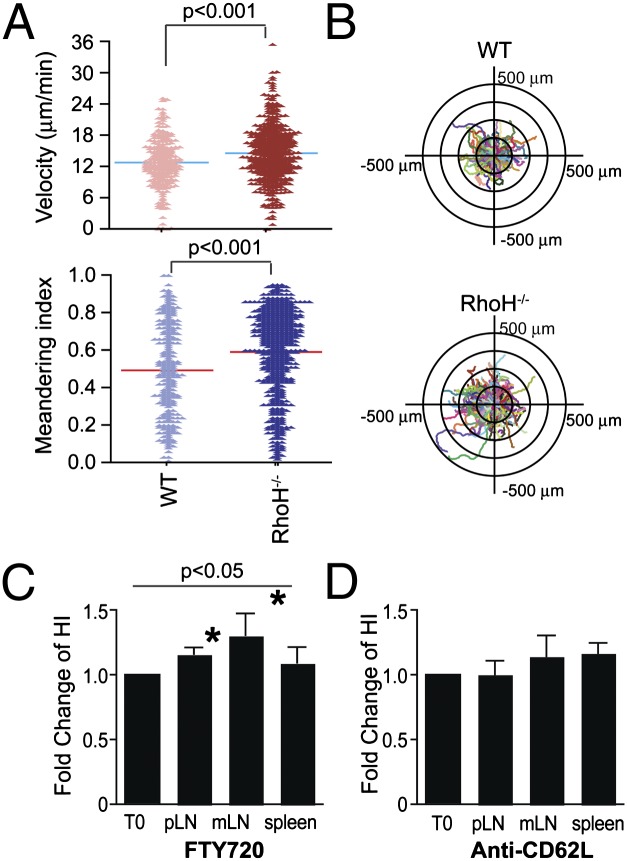Fig. 5.
RhoH-deficient T cells migrate in a more directional manner and have altered homing to lymphoid organs. (A and B) Migration of naïve T cells isolated from wild type (WT) or RhoH-deficient (RhoH−/−) mice were assessed on dishes coated with ICAM-1 and CCL21 (Movies S5 and S6). Shown are velocity and meandering index from one representative experiment of three (A). Cell migration plots of cell tracks overlaid with origins from center are shown (B). (C and D) Adoptive transfer of cells 1 d before treatment with FTY720 (C) or anti-CD62L (D) for 12 or 20 h, respectively. The fold change in the homing index, as determined by [carboxy fluorescein succinimidyl ester (CFSE)+sample/PKH+sample]/(CFSE+input/PKH+input) at 12 h over 0 h. These data are means ± SEM, n = 4 experiments with 13 mice/time point for FTY720 and n = 3 with 12 mice/time point for anti-CD62L, peripheral lymph node (pLN), and mesenteric lymph node (mLN). Statistical significance P < 0.05.

